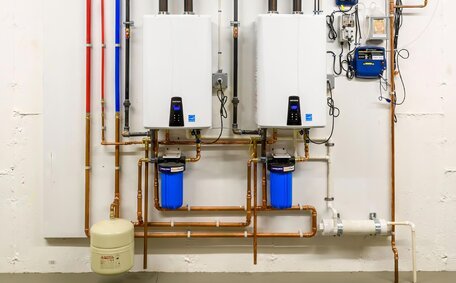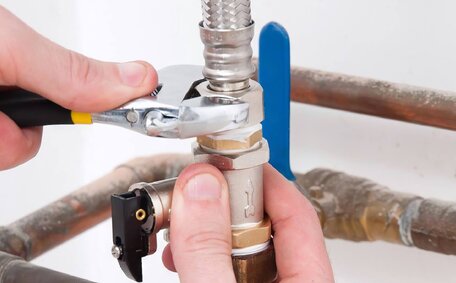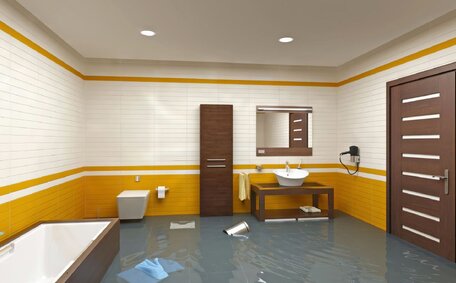Key Factors That Impact Relining Expenses
When considering the benefits pipe relining can have on your plumbing system, understanding the impact of each key factor on the relining cost is crucial. These include:
- Accessibility - Getting access to damaged pipes can add expenses if they are in tight spaces or buried deep underground.
- Size and Length - The diameter and length of pipes are critical factors; larger and longer pipes demand more lining material, leading to increased costs.
- Pipe Material - Metal pipe relining usually incurs higher costs compared to plastic, clay, or concrete pipes due to material compatibility issues.
- Number of Junctions - The more bends and junctions in the pipes, the more complex the relining job and higher the costs due to additional materials and labour.
- Relining Method - While Cured-in-place pipe (CIPP) lining is often the most affordable trenchless method, alternatives like pipe bursting can lead to higher expenses.
- Location-Specific Factors - Several factors, including challenging terrain, proximity to buildings or trees, and soil conditions, can intensify the complexity of the job and inflate costs.
Grasping the pipe relining process and its costs can positively influence your property maintenance budget, thanks to the financial advantages of this trenchless technique. Seeking advice from a professional plumber is a great way to make sure your pipe relining needs are met with an accurate plumbing system assessment and service estimate.
Understanding Different Relining Methods and Pricing
There are diverse methods for relining pipe, each with unique pricing considerations and ideal applications:
Inversion Pipe Relining
Inversion relining entails applying a resin-saturated felt liner to the pipe interior, followed by curing it in place with hot water or steam to repair damaged areas. This method forms a robust new pipe inside the existing damaged one.
Inversion lining, with costs assessed by pipe size and length, is optimal for significant pipe sections and entire home repiping projects. In regions with different measuring standards, this would translate to costs $25-45 per foot, with costs dependent on factors like pipe size, accessibility, junctions, and the project’s extent.
Patch Pipe Relining
Patch relining is an effective way to fix broken sewer pipes and adds to the financial prudence of the pipe relining process. For repairs, small fibreglass liners are inserted into the pipe and then expanded and cured, sealing off damage and contributing to the overall relining cost.
Pipe patching can easily be custom-fitted to address the pipe needs at hand, catering to both minor and budget-conscious repairs. Costs vary depending on repair size and complexity, ranging from $250 for small pipe patch jobs to $1000+ for extensive damage.
Drag-In Pipe Relining
A resin-infused felt tube is inserted into the current pipe, factoring into the costs once it’s expanded and cured.
Drag-in relining is ideal when the pipe too small for inversion lining and for addressing minor repairs. It costs $100-250 per linear metre depending on pipe size and project specifics.
Understanding the differences related to size and length of the pipe, materials, and processes and the associated costs enables homeowners to embrace a pipe relining approach well-matched to their specific needs.
Pipe Size Considerations in Cost Estimates
Sewer pipe relining costs, particularly for sewer repairs, are greatly determined by the pipe size. Accordingly, costs increase for larger pipes reflecting higher material usage. Homeowners often question how much does pipe relining cost for larger diameters, considering the increased material required for substantial interior spaces.
A 200mm type pipe, integral to the sewer line system, incurs a cost per metre of approximately $170 to reline, compared to a smaller 100mm pipe at just $85 per metre.
A 20 metre section generally costs more to reline than a 5 metre section. There is often a base fee plus a per metre rate.
In addition, large and extensive drains pipe networks usually feature more bends and junctions, which can also impact the intricacy and cost of the job. More resin is required at these connection points. The complexity adds labour and material expenses.
For an accurate pipe relining quote, a comprehensive pipeline inspection is essential to assess the pipes’ condition as well as their size and length.
Pipe Material Choices and Relining Affordability
Material selection is a significant factor affecting the overall cost of pipe relining. Epoxy liners usually cost $100-150 per meter installed.
The most common, and thus most affordable, option that does require consideration at homeowners’ disposal is epoxy resin-saturated felt tubes.
For does sewer pipe relining, using advanced materials like fibreglass or carbon fibre liners can offer supplemental strength and durability, but at starting prices from $250 per metre. These high-quality options are designed to create linings that are stronger than the originals, ideal for high-pressure applications like main sewer lines.
Ultimately, your existing pipe material dictates the appropriate relining choice for the project. Pipe relining also effectively restores functionality to plastic and cement pipes using basic epoxy. Older cast iron pipes might gain from the robustness of fibreglass or carbon fibre liners, offering efficiency over conventional repair methods.
Consulting a professional plumber can help balance the costs versus benefits of your sewer pipe options tailored to your situation.
Location and Site Accessibility Challenges
The ease of access to the access damaged pipe can significantly affect the relining cost in Sydney within targeted areas. Limited areas, such as spaces between buildings or close to vegetation, can restrict equipment access, leading to more labour-intensive excavation. Deep underground pipes also add complexity.
Additional location-specific challenges that can raise relining costs in Bella Vista encompass:
- Older properties featuring complex, winding sewer pipe systems, adding to the potential cost for Sydney homeowners
- Ensure pipes running under concrete paths or structures receive special attention as these scenarios can complicate the relining process
- Soil conditions like thick tree roots or heavy clay
- Limited access around your property’s buildings for equipment and technicians
Here are strategies to mitigate these access-related challenges:
- Utilize CCTV technology to meticulously chart the course of your drains, ensuring the pipeline’s condition is clear before quoting the relining cost in Sydney
- Conduct targeted excavation to reveal access points.
- Use flexible relining materials suitable for tight bends
- Allow sufficient workspace access in cost estimates
Engaging a seasoned local plumber, with a good set up for Sydney’s relining nuances, is crucial to get job done efficiently and cost-effectively, particularly when addressing issues like blocked drains.
Project Duration and Labour Expenses
The duration of a pipe relining project influences labour costs; Straightforward projects are usually completed between three to five days. However, scenarios where the pipe damage is significant or access is restricted can prolong project timelines, which could inflate the budget.
Typical phases such as inspection, access excavation, cleaning pipes, liner installation, and curing/drying can vary in duration, each influencing the cost and taking experienced crews roughly 3-5 days to complete. However, unexpected issues can extend the project duration, potentially leading to higher costs.
Extended projects mean increased labour hours onsite plus equipment rental fees accruing daily. For every unforeseen day, homeowners can expect pay anywhere from an additional $500-1500+ for crew labour and equipment rentals. This is precisely why detailed quotes typically specify a time frame, delineating both best and worst-case scenarios.
Enlisting professionals who can get the job done in a cost effective way despite unexpected hurdles is key. An efficient plumber will strategise to get the job done, optimising project duration and balancing affordability with high quality, long-lasting pipe renewal.
Managing Overall Costs through Informed Decisions
Homeowners can reduce sewer drain relining costs by making informed decisions:
- Choose the Right Relining Method - Opt for inversion or patch lining instead of more complex pipe segmentation or replacement if suitable. This avoids unnecessary costs.
- Select Affordable Materials - Basic epoxy resin liners provide adequate repairs for most situations and are the most budget-friendly option, though additional factors can affect the final cost.
- Get Multiple Quotes - Consult multiple local plumbers to compare relining quotes, which can save you money and materials proposed. This highlights competitive pricing.
- Review Quote Details - Scrutinise what factors like pipe size, junctions and access are driving prices to ensure accuracy.
- Consider Future Savings - Pricier resilient materials like carbon fibre may offer greater long-term durability, preventing frequent repairs.
- Beware Very Low Quotes - Extremely cheap relining quotes likely compromise on quality materials and workmanship, risking poor results.
An experienced plumber can advise on the best pipe relining options, offering cost-effective solutions for long-lasting results for various plumbing issues. Avoid false economies - the cheapest quote may not provide the best value.
Getting Accurate Quotes from Qualified Professionals
Getting precise pipe relining quotes is essential for informed decision-making and accurate budgeting. Seek quotes from established local plumbers with extensive expertise in various trenchless repair methods, quality materials and equipment. They can conduct a meticulous inspection using CCTV technology to accurately gauge size, length, and junctions, thus providing clear-cut quotes that reflect the real cost pipe relining Sydney residents can rely on. Compare quotes side-by-side while verifying credentials, years in business and check reviews. Relying on a trusted relining company is essential, as cheaper quotes often lack details or use inferior materials and rush jobs, risking premature repair failures. The lowest quote doesn’t equal the best value. Seek quotes from established local plumbers with extensive expertise in various trenchless repair methods, quality materials and equipment.
Calculating the Long-Term Value of Pipe Relining
While the upfront cost of pipe relining ranges from $85-250 per metre, it’s important to factor in the long-term savings over pipe replacement.
Contrast this with pipe relining, where the less disruptive process ensures minimal disruption during the repair. Conversely, trenchless pipe relining is an exceptional option for renewing pipe interiors without having replace them entirely, avoiding disruptive excavations. High-quality materials used in pipe relining can, over time, extend life your older piping network, providing a new lifespan potentially beyond 50 years. Considering a 100 metre pipe system, replacement would cost $40,000-100,000 versus $8,500-25,000 for relining. Considering a 100 metre pipe system, replacement would cost $40,000-100,000 versus $8,500-25,000 for relining. There minimal disruption, which also adds value.






